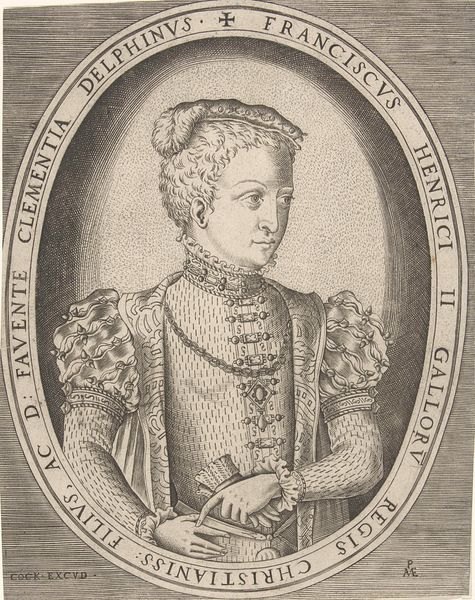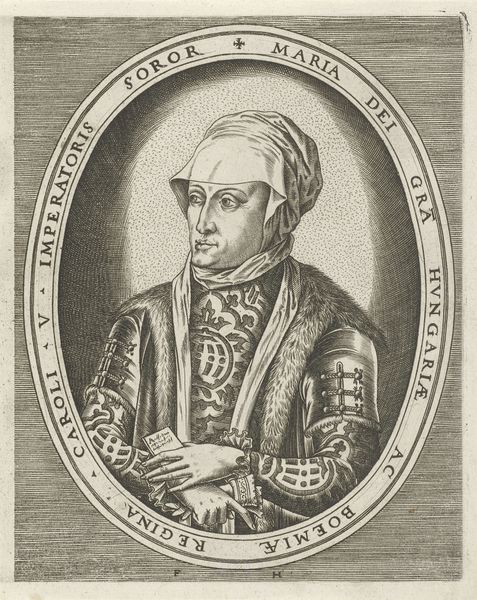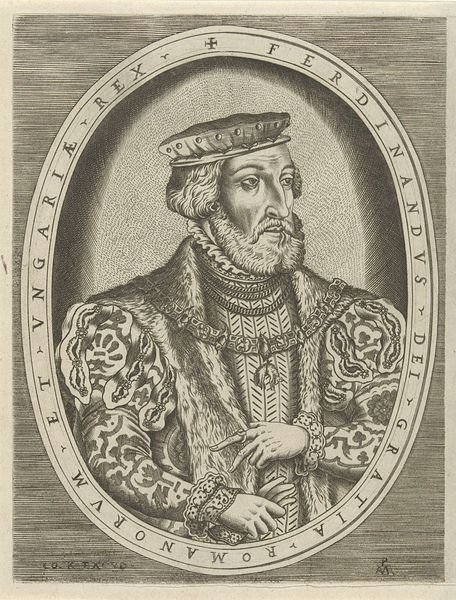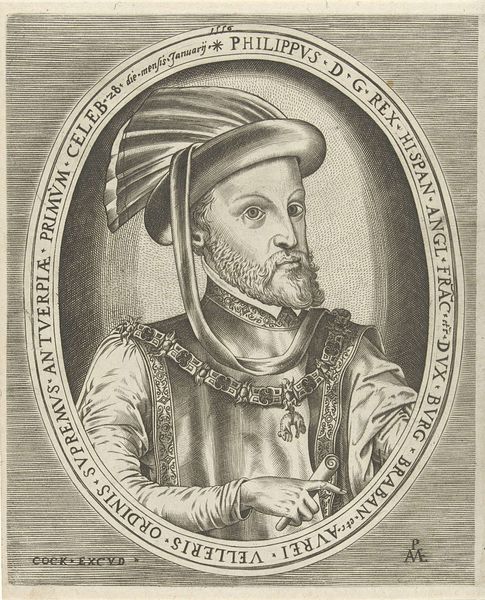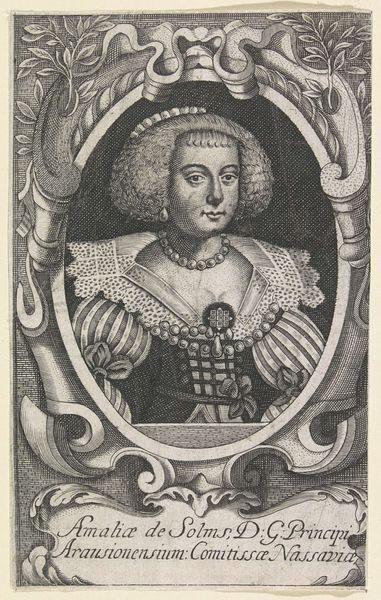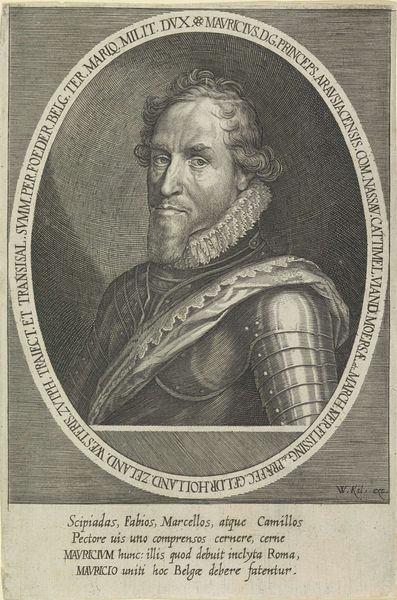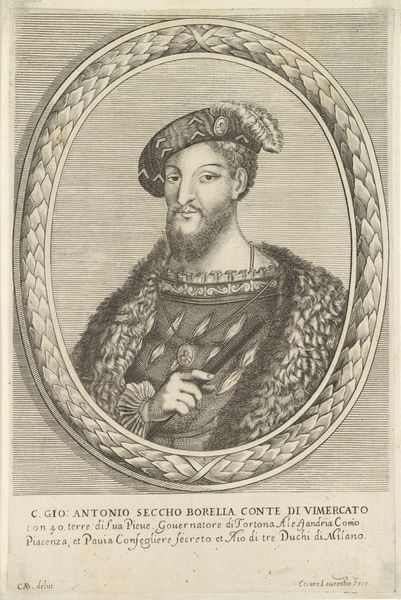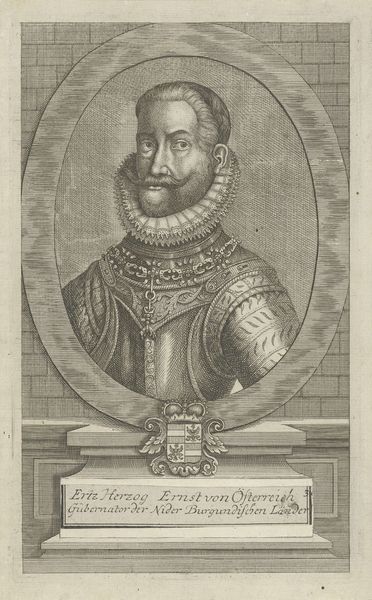
print, engraving
# print
#
old engraving style
#
caricature
#
mannerism
#
11_renaissance
#
history-painting
#
engraving
Dimensions: height 208 mm, width 163 mm
Copyright: Rijks Museum: Open Domain
Curator: Let’s consider this print, "Portret van Ferdinand II van Tirol," attributed to Pieter van der Heyden and dating from approximately 1540 to 1564. It's an engraving, currently residing here at the Rijksmuseum. The precision is astounding. What are your initial impressions? Editor: He seems trapped. Trapped in that stiff, ornamental armour, trapped in that tight oval frame. There’s a sort of… caged nobility to him. The expression on his face speaks to constraints. Curator: Caged, perhaps by the very methods of its production. This wasn't a freehand sketch; it's an engraving, involving considerable labor and a whole chain of making from design to printing. The act of repeatedly pressing the metal plate onto paper reflects a culture concerned with reproducible likeness and spreading political images. Editor: Absolutely. Think about the context, though. Ferdinand II of Tirol wasn't just some noble; he was a figure of significant power, involved in religious and political conflicts. How did those intersect to affect both him and the perception of him, that the printer and designer are interested in conveying in this particular engraving? What kind of person this kind of powerful position attracted, and the image that he himself wanted to present, is also of great interest. Curator: It certainly reflects the Mannerist style. Notice the artificiality and elongation of form, not just in his figure, but in the rendering of fabrics, his armour, the way the details pile on top of each other. These things elevate the work beyond a straightforward portrait, serving propagandistic or aesthetic ends above plain naturalism. Editor: Exactly, consider what that armour symbolizes: not just protection, but status, authority. It's less about his physical being and more about the systems propping him up, particularly his military power and right to rule, all crafted and materially presented. We should think more of these men's capacity to maintain military rule. Curator: So the portrait isn't merely representational; it's actively constructing and perpetuating Ferdinand's authority, influencing those looking at this representation today. Editor: It shows a great awareness of material representation to sustain the ideological image. Food for thought for sure, on all sides of power, gender, and production. Curator: Indeed. And thank you for illuminating it through the critical lenses of identity and power.
Comments
No comments
Be the first to comment and join the conversation on the ultimate creative platform.
